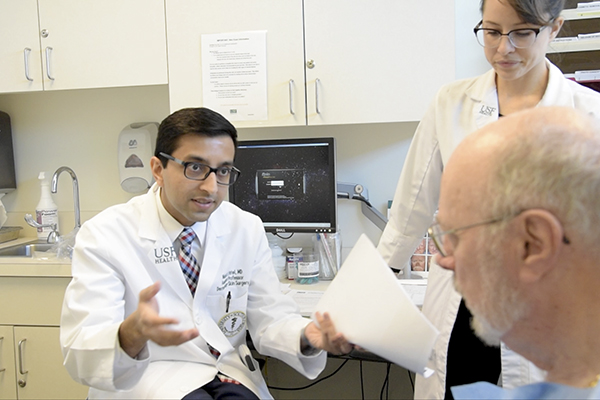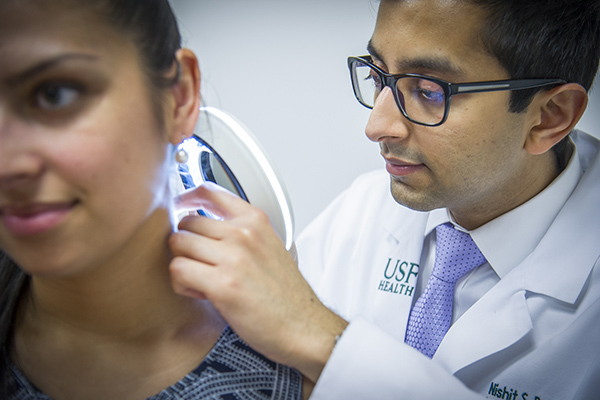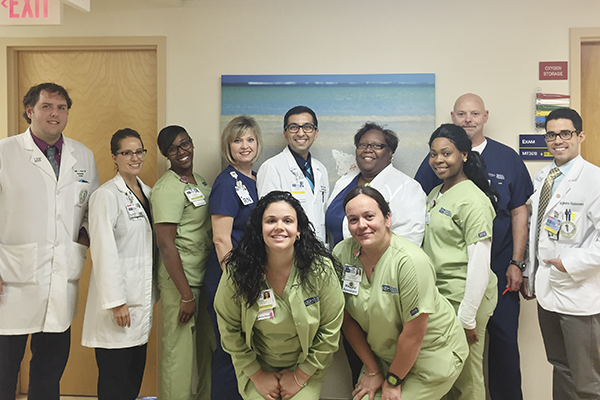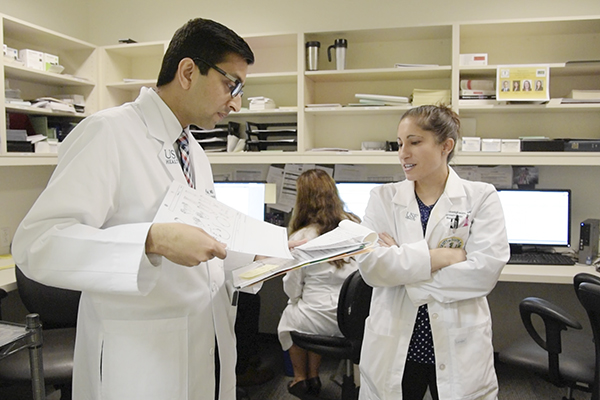]]>
In the ongoing research and treatment of diabetes, the focus is typically on the two forms of the disease that dominate public awareness. Type 1 is caused by the immune system attacking the cells that produce insulin, so that the person requires insulin therapy for life; type 2 is frequently associated with obesity and lack of exercise, resulting in insulin resistance.
But researchers are learning more about patients whose symptoms are classified as “atypical,†thanks to the Rare and Atypical Diabetes Network (RADIANT), led by teams at USF Health, Baylor College of Medicine, the University of Chicago, and Massachusetts General Hospital. The USF Health research team is led by Jeffrey Krischer, Ph.D., director of the USF Diabetes and Endocrinology Center and the USF Health Informatics Institute, and includes Hemang Parikh, Ph.D., an associate professor in bioinformatics and biostatistics in the Health Informatics Institute.
Their paper, “Data Mining Framework for Discovering and Clustering Phenotypes of Atypical Diabetes,†was recently published in the Journal of Clinical Endocrinology & Metabolism in collaboration with Ashok Balasubramanyam, M.D., and Maria Redondo, M.D., Ph.D., from Baylor College of Medicine, and Christiane Hampe, Ph.D., from the University of Washington.
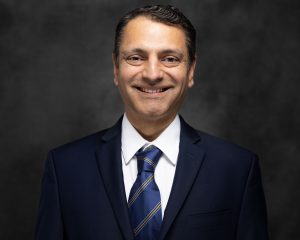
Hemang Parikh, PhD, of the USF Health Informatics Institute
“In addition to type 1 and type 2 diabetes, there is a range of atypical forms of diabetes that affect people who cannot be categorized in the same way,†said Dr. Parikh. “Sometimes, these people – children and adults – are misdiagnosed and receive different treatment than they should get.â€
One form of atypical diabetes – monogenic– is due to the dysfunction of a single gene. Another type results from a cluster of genetic disorders and relates to abnormal mitochondrial function. Another is characterized by patients who appear to have type 2 diabetes, yet present with diabetic ketoacidosis, a complication thought to occur only in patients with type 1 diabetes. Yet another affects the manner in which fat is stored.
The new paper furthers the study of these rarer forms of the disease, for which patients’ symptoms and health challenges differ from those with type 1 and type 2. The analysis was conducted through the sophisticated process of data mining – digging through data to discover hidden patterns and is sometimes referred to as “knowledge discovery in databases.â€
Dr. Parikh and his team developed a data mining system as part of a program called DiscoverAD (short for Discover Atypical Diabetes). In essence, DiscoverAD relies on a two-step filtering process – first to exclude participants who meet definitions of the typical type 1 diabetes or type 2 diabetes, then to include participants with certain pre-specified atypical diabetes characteristics.
“This is followed by robust analysis to discover novel phenotypes of atypical diabetes (AD) within the filtered group,†Cassandra Remedios, M.S., an assistant in research in bioinformatics in the Health Informatics Institute said. “We purposefully developed DiscoverAD to permit flexibility and efficiency so it can be applicable to various clinical settings with different types of large cohort datasets.â€
In the study, two distinct and very different cohorts of patients with diabetes were investigated. The first cohort comprised Hispanic participants with diabetes from the Cameron County Hispanic Cohort led by Joseph McCormick, M.D., and Susan Fisher-Hoch, M.B.B.S., M.Sc., F.R.C. Path., M.D., of the University of Texas Health Sciences Center. The second cohort comprised 758 multiethnic children within the Texas Children’s Hospital Registry for New-Onset Type 1 Diabetes study. The investigation allowed them to identify and cluster phenotypes of atypical diabetes. “Due to the large cohort datasets, a manual review would have been extremely time-consuming,†Parikh explained.
The study was conducted as part of RADIANT, which is dedicated to discovering and defining rare and atypical forms of diabetes. RADIANT is comprised of universities, hospitals, and clinics around the United States working to gain a deeper understanding of atypical diabetes. Baylor College of Medicine and the University of Chicago are the national centers of the consortium, and USF serves as the data coordinating center for the entire network.
“This work demonstrates the high prevalence of atypical forms of diabetes in varied populations. The DiscoverAD tool is an innovative and practical tool to identify such patients in different datasets. I believe this could be a foundation for developing criteria that clinicians can use to diagnose their patients with diabetes more accurately and treat them more precisely,†Dr. Balasubramanyam said.
The idea of RADIANT’s study, which is funded by the National Institute of Diabetes and Digestive and Kidney Diseases, part of the National Institutes of Health, is to identify people who have atypical diabetes – which is a cluster of traits, “ Dr. Parikh explained. “It can’t be characterized in just one way. There is heterogeneity in atypical cases.â€
The significance of the research lies in the fact that some patients with rare forms of diabetes remain undiagnosed or could possibly receive incorrect treatment. Proper diagnosis, according to RADIANT, “enables targeted therapy, leads to improved quality of life, and aids in the diagnosis of diabetes in other family members.â€
Patients with atypical diabetes are treated throughout the country, but frequently as isolated, individual cases, and that has made it difficult to amass a base of knowledge that benefits providers and patients. RADIANT addresses that challenge by creating a centralized database, information, and resources – with the goal of leading to more effective diagnoses and better treatment plans.
“We found in our studies that atypical cases are quite high – comprising about five to eleven percent of diabetes diagnoses,†Dr. Parikh said. “And we also found that many people have been misdiagnosed as either type 1 or type 2 diabetes.â€
A key indicator of atypical diabetes is a treatment that does not seem to be working. For instance, some diabetes patients might start losing weight quickly and inexplicably. Others may see glucose levels remain high despite receiving insulin.
“If a person is not responding in a way they should be, that could be a sign,†Dr. Parikh said.
As one of the nation’s leading diabetes researchers, Dr. Krischer has been studying data related to atypical diabetes for several years. Several hundred subjects have been involved in the RADIANT study to gain a greater understanding of atypical diabetes through data mining.

Jeffery Krischer, PhD, at the USF Health Informatics Institute on USF’s campus in Tampa.
 “These new analytic techniques make it easier to recognize atypical forms of diabetes that can lead to better management tailored to individual case’s characteristics,†said Dr. Krischer, who also holds the USF Health Endowed Chair in Diabetes Research. “Not only does this demonstrate the potential of personalized medicine, but the analytics also define computable phenotypes that can be generalized to many data mining situations.â€
Dr. Parikh, whose expertise lies in biomedical data analysis, has a personal connection to the study of diabetes. Both of his late grandfathers developed type 2 diabetes and his mother has it as well. That led him to want to learn more about the disease.
He finds his work with RADIANT particularly rewarding, with a collaborative approach to researching and treating atypical diabetes.
“It’s a huge consortium, and we’re the main data coordinating center, which means we focus on the aggregation and management of data from multiple sites,†he said. “Then we work with these different network partners for processing of the biospecimens for high-throughput technologies such as whole-genome sequencing, RNA-sequencing, or metabolomics and deep phenotyping of individuals and/or families.â€
The study is ongoing, Dr. Parikh stresses. If somebody suspects they may have atypical diabetes or know someone who might, they can visit the RADIANT website (www.atypicaldiabetesnetwork.org). Visitors are asked to complete a questionnaire and then, based on the responses, could be enrolled in the study.
“There is a considerable number of atypical cases out there that people may not realize,†Dr. Parikh said. “And we want those people to receive the proper diagnosis, to avoid causing diabetes complications over time.â€
— Story by Dave Scheiber for USF Health CommunicationsÂ
]]>
]]>
In this era of “big data,†spanning basic, translational, and clinical research, I am often asked how an investigator can search USF electronic medical records for potential associations or for feasibility analysis for clinical trials –without approval from the Institutional Review Board (IRB).
I am happy to announce that the i2b2 system is now fully implemented at USF Health and includes data from Allscripts and Epic for both USF and Tampa General Hospital patients. i2b2 is a warehousing and data mining tool for medical data that provides for complex Boolean searches of these records using de-identified patients. One can rapidly ascertain if there is an apparent overrepresentation of a disease or trait within a large cohort of patients with a given disease.  This may serve as a hypothesis generating method, which could be tested at various levels using techniques in basic, translational, and clinical research.
i2b2 was written by investigators at Harvard Medical School, Massachusetts General Hospital, and Partners HealthCare System, with the first release in 2007. The user interface is intuitive and friendly. It is widely used throughout the country in academic medical centers not only for hypothesis generation and testing, but also for cohort identification. In the latter situation, once an investigator determines that a sufficient number of patients at USF/TGH fit enrollment criteria for a clinical trial, and after IRB approval, these patients can be identified, so that they can be contacted for potential participation. This should greatly enhance our ability to move forward investigator-initiated or industry sponsored trials.
The USF i2b2 system also represents a “real life†patient population, taking into account the diversity of the Tampa Bay population. Our i2b2 system currently has more than 1 million individual patients, over 10 million patient encounters, and more than 250 million data points. What a resource! For grant writing purposes, it is so much more convincing if you base your projects on data from a large population to which you truly have access.
A component of our i2b2 system can also connect to other systems at other academic institutions. This can be done via a consortium called TriNetX. Investigators can increase the power in their hypothesis generating or testing, ascertain geographical bias, and search for institutional partners for large trials.
Unlike the droid C-3PO, where we do not know whether the last character is an “O†or a “0â€, and we don’t know what it stands for, we know a lot about i2b2. It stands for “Informatics for Integrating Biology and the Bedside.â€
A number of individuals have already been trained and are actively using the system. I encourage investigators to take advantage of its capabilities. A link to training and gaining access will be provided on the MCOM Research website shortly.
Stephen Liggett, MD
Vice Dean for Research
Professor of Medicine, Molecular Pharmacology and Physiology
USF Health Morsani College of Medicine
Co-director, USF Health Heart Institute

]]>
]]>
This story is part of a series highlighting faculty who are shining examples of quality and compassionate patient care and patient safety. Every day, these health care providers put their patients first. In the process, they create successful models of advanced care focused on empathy, safety, technology and evidenced-based medicine, models that carry through everything they do – into their practice, their teaching, their research, their community outreach, and into the USF Physicians Group.
Reams of information helped him determine what college he would attend and which residency programs to apply for. Statistics help him know which medications are the most effective for his patients. And archived scientific literature helps him conduct his own research.
So Nishit Patel, MD, knows data is useful.
//www.youtube.com/watch?v=0RUukBCqBz8
But what he has come to discover in the few years since becoming a doctor is that big data will, in the very near future, help researchers find cures – big cures, like for cancer and Alzheimer’s.
Dr. Patel is a dermatologist for the USF Physicians Group and was recently named the chief medical information officer for data analytics for USF Health. In that role, he will work with USF Health Information Systems and USFPG leadership to oversee the business intelligence platform and ensure that data reported from the system is both meaningful and credible. In addition, he will help guide the expansion of the newly developed research data warehouse.
Pulling from such vast amounts of data will help the USFPG improve patient care, from streamlining how quickly a patient can get in to see a USF health care provider to – the ultimate goal – improving health outcomes.
***
Big data is more than collections of demographics and shopping patterns and political bents. In science, big data looks at the tiniest of details in an enormous sample size. Even cellular functions, mutations, secretions, and bindings can play out across the million-fold and reveal trends that, in smaller sample sizes, might seem like outliers and oddities.
Dr. Patel had his own ah-ha moment for just how impactful data can be for improving patient care. And it pushed him to start a dermatology clinic focused on a patient population in need of that expert care.
In his training, he had learned that organ transplant patients are at a much higher risk for developing skin cancer, but there is little research on how to significantly reduce this risk and little indication that the bulk of these patients are getting intensive, personalized dermatology care.
“In looking at skin cancer and solid organ transplant patients, this is an area where there is very little research currently that can help change how we take care those patients,†he said. “Patients who’ve had organ transplants are at very high risk compared to the average population for skin cancer. In fact, they can have a 65 times higher risk for squamous cell skin cancers. Right now our treatment paradigm is that we try to detect early, we try to do what we can in terms of prevention, but at the end of the day there are lots of patients in that transplant population experiencing 5, 10, 15 skin cancers a year.â€
Seeing an opportunity to fix a problem, Dr. Patel worked with Tampa General Hospital’s transplant team to design a dermatology clinic specifically for transplant patients and part of the post-surgery care.
“There was an incredible need because transplant patients were not being optimally managed for skin cancer prevention, detection, and treatment,†he said. “By creating and building this clinic from the ground up, we had a chance to capture all these patients so that, as soon as they get their organ transplant, they are automatically seeing us in the dermatology clinic. We get a chance to sit down with them and talk in very frank language: this is what your risk is for skin cancer and you’ve survived a lot to get your organ transplant so let’s make sure that you don’t have a bad outcome because we didn’t catch or treat a skin cancer early enough.â€
The result is that transplant patients, who already beat death by getting a transplant and are beating organ rejection, are now beating skin cancer. Since opening in October, he has seen 230 patients. At the 100th patient mark, Dr. Patel said, they had discovered more than 50 squamous cell skin cancers, basal skin cancers, atypical moles and melanomas on those patients and destroyed countless pre-cancers.
Aside from these good statistics, it was a thank you from a patient that gave him a true feeling of success.
“Within the first few months of starting the clinic, a patient returned for a follow-up from a biopsy for a squamous cell skin cancer in his scalp,†he said. “As we were walking out of the room, he paused and said ‘Thank you so much for starting this clinic. If it wasn’t for this program I would have never gone to the dermatologist.’ It’s very likely that his skin cancer in the scalp would have continued to grow and potentially spread. But because of this program, we found that cancer, we’re treating that cancer, and his life expectancy won’t be adversely affected by it. That is more rewarding than anything else. That is the whole point.â€
Data presented the trend that drove the vision for the clinic that improved patient outcomes.
***
In addition to being an assistant professor of medicine in the Department of Dermatology and Cutaneous Surgery, he is also associate program director for USF’s Dermatology residency program. So, he’s a teacher to new physicians, and he’s helping them learn from the start how to input data and use data to practice better medicine.
“My mentors tell me they used to practice medicine in a way that was eminence-based, meaning that when the person they trained under said ‘that’s how it’s done,’ well, that’s how it’s done,†he said.
“Well, over the past 10 years, especially over the past few years, there has been a shift from eminence-based to evidence-based. That is such a powerful change in terms of how we care for patients and to do that, of course, you have to have good evidence, which means you have to have good data. Look at where we have gone with transitioning from paper records to electronic medical records to really aggregating pools of different sources of data. We have this amazing opportunity in terms of the next few years to look at data in a completely different way than we have in the past.â€
At USF Health, that means electronic health records, but also a soon to be released research data warehouse built by USF Health Information Systems.
“Here at USF Health, we are developing a really great research database as a resource for clinicians and researchers, whether they’re bench researchers, translational, or in clinical medicine, to very easily access a pool of data they’ve never had the opportunity to pull together before,†Dr. Patel said. “Providing tools like Epic or our data warehousing efforts means we are building the giant infrastructure and the toolkit for all of our researchers to use and to develop that next great drug, to treat severe disease, and design that next great prevention strategy. I’m really optimistic about where we’re going and I think we can continue to transform how we practice medicine and to do it in a smarter way than just how we’ve been trained.â€
***
It seems to be all about data, but Dr. Patel is quick to note the constant need to stay focused on the patient. The data will help, but not at the cost of direct, focused care.
“In looking at the bigger picture of a patient’s entire medical record, or of every patient in an entire health care system like USF and the inpatient data with the integrated medical records data we have with Tampa General, you’re going to find trends that you would otherwise never even realize were there,†he said.
“That’s when the power of data improves patient care. The beauty is, by creating that infrastructure for experts to look at a huge aggregate pool of data from their lens and offer analyses together, we can really change how we’re doing things in the clinics and how we can take the best care of that patient in front of us right now.â€
Story by Sarah Worth, photos and video by Sandra C. Roa, USF Health Communications.
]]>

